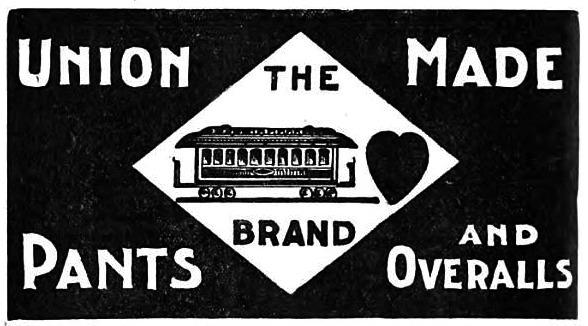
Carhartt is known throughout the world as a manufacturer of high-quality workers' clothing. The company was founded over 120 years ago to supply railroad workers and other laborers with reinforced overalls made with high-grade materials. For many of those years, a great deal of those garments were manufactured right here in Corktown.
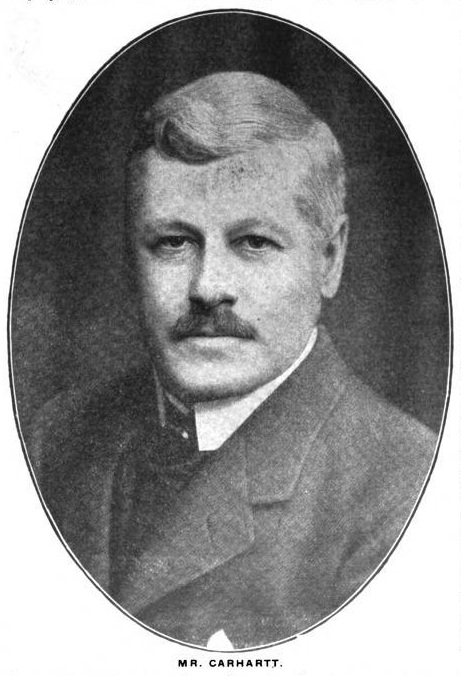
Hamilton B. Carhartt (1855-1937) (Google Books)
Hamilton Brakeman Carhartt was born in Macedon Locks, New York, on August 27, 1855. He grew up in Jackson, Michigan, where he married Annette Welling on December 21, 1881. They had three children: Hamilton Jr., Wylie, and Margaret. After moving to Grand Rapids, Hamilton Carhartt went into business with his father-in-law, Stephen Alling Welling, in 1882. Two years later the family moved to Detroit, where Welling & Carhartt operated as a gentlemen's furnishing wholesaler. They later changed their name to Hamilton Carhartt & Co. Finally, in 1889, the business converted to manufacturing exclusively workingmen's clothing.
After changing locations at least three times in three years, the growing business finally set up its permanent manufacturing facility in Corktown. Although the building was set back from the main road by half a block, it was addressed as 479 Michigan Avenue, on the southwest corner of 10th Street. The address would later be renumbered as 1605 Michigan Ave. Below is the factory's representation in the Sanborn Maps in 1897:
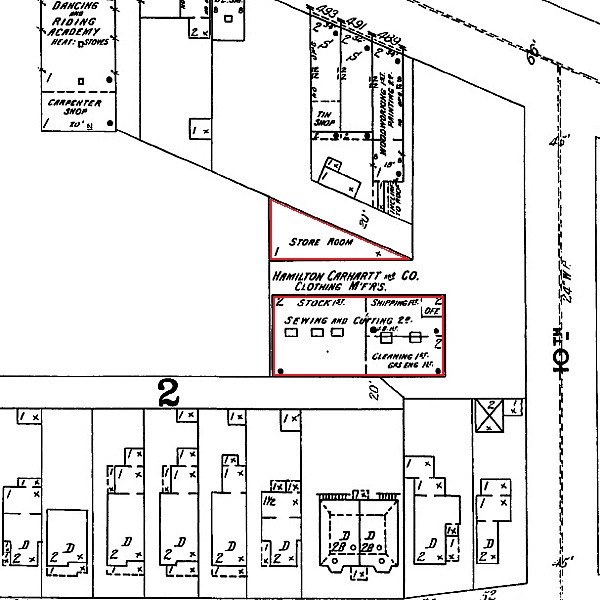
The following ad appeared in the Brotherhood of Locomotive Engineers Journal in 1898. In a show of respect to women in organized labor, it features Catherine Doody, president of Garment Workers Union No. 74. Miss Doody lived at 196 Williams Street (now Interstate 96), half a block north of Myrtle (now Martin Luther King Blvd). She married a tailor named Joseph Doll in 1903.
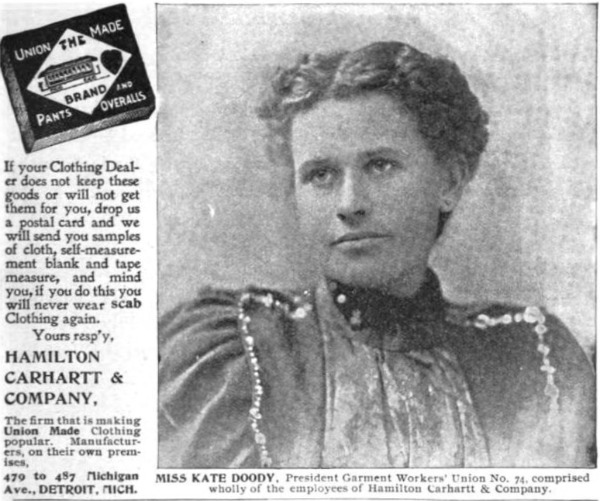
(Google Books)
A long-standing theme of Carhartt's advertisements has been the company's progressive labor practices, including their fully-unionized workforce, the institution of an eight-hour work day, and even profit sharing among its workers. The company grew rapidly at the beginning of the twentieth century, reincorporating in 1905 as Hamilton Carhartt Manufactuer, Inc, and in 1910 as Hamilton Carhartt Cotton Mills. By then the company possessed two cotton mills in South Carolina and Georgia; factories in Atlanta, Dallas and San Francisco; two facilities in Canada and one in Liverpool, England.
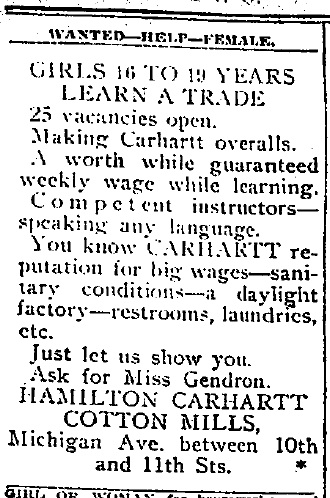
Ad from the Detroit Free Press on September 22, 1918.
As the company expanded, so did its plant in Corktown. This detail from the 1921 Sanborn map collection shows the extent of its growth at the time. Roll your cursor over the image to see what the same location looks like today. (Note that Michigan Avenue was widened in the 1930s.)
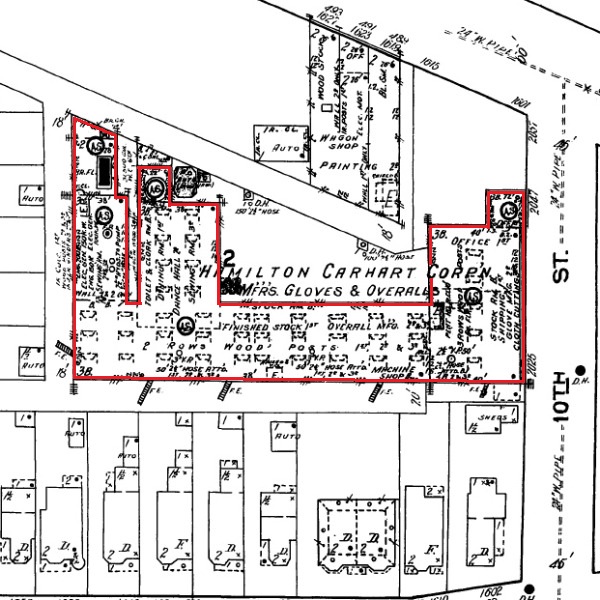
Below is a rendition of that plant that appeared in a 1906 advertisement. The people and horses on Michigan Avenue and Tenth Street may have been shrunk down to exaggerate the building's size.
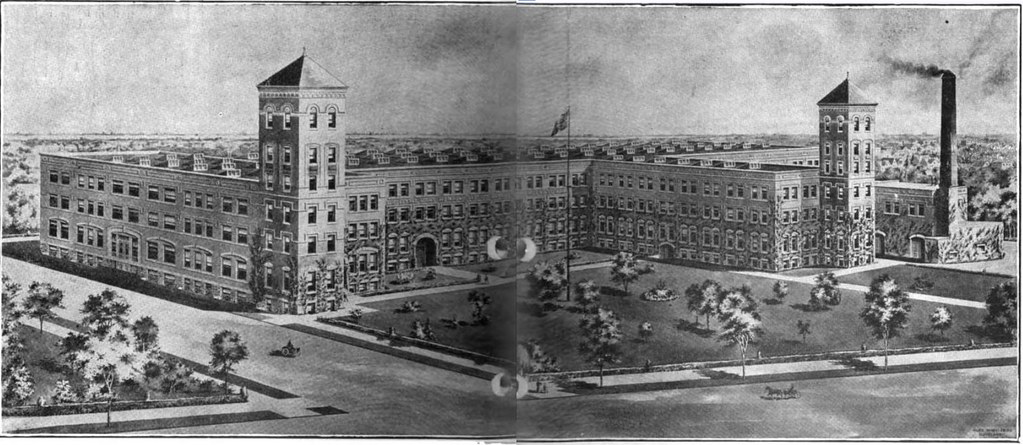
Click the image for a larger version. (Google Books)
The Great Depression devastated the Carhartt corporation. At its lowest point, only three of its facilities remained open: Dallas, Atlanta, and Detroit. By 1932, the company had moved out of its Michigan Avenue location to a much smaller facility at 1743 Labrosse.
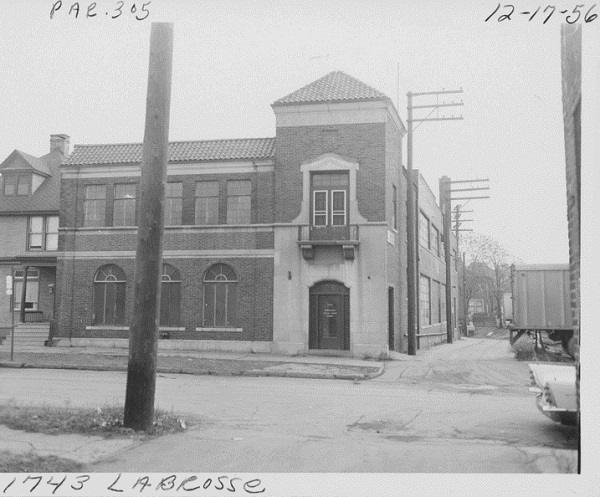
1743 Labrosse in 1956. This building is now demolished.
Courtesy of the Burton Historical Collection, Detroit Public Library.
By 1935, Carhartt had left Corktown all together, and relocated to 3000 East Jefferson, which is today the home of Dr Dre's Open Pit Grill and Bait Shop. Carhartt's original Corktown plant is visible behind Navin Field in this circa-1930s aerial photograph:
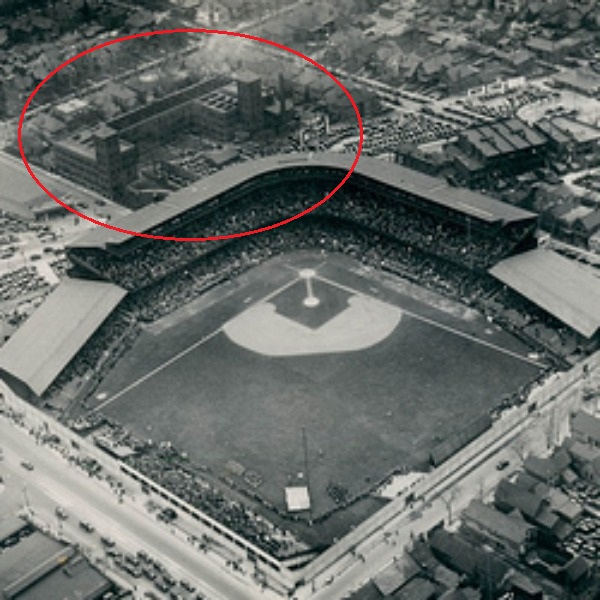
Image from doctor_gogol's Flickr photostream (Source)
The Carhartt family never themselves resided in Corktown. Hamilton Carhartt preferred Brush Park and East Jefferson, and ultimately moved to Rock Hill, South Carolina. His sons Hamilton Jr. and Wylie resided in the Grosse Pointes.
On May 10, 1937, Hamilton Carhartt and his wife Annette sustained fatal injuries in an automobile accident. Mrs. Carhartt died that same day, followed by her husband on May 12. Their remains were interred at Woodmere Cemetery in southwest Detroit. Ownership of the company fell into the hands of their sons. Carhartt, Inc. remains family-owned to this day.
The following photograph, dated May 1, 1940, shows the entrance to Carhartt's first Corktown plant at 1605 Michigan Ave. A broken window suggests that the building, vacant for eight years by that point, was already decrepit. I have been unable to find out when exactly it was demolished, but it occurred before 1949, when an aerial photograph of Corktown shows an empty lot at that location.
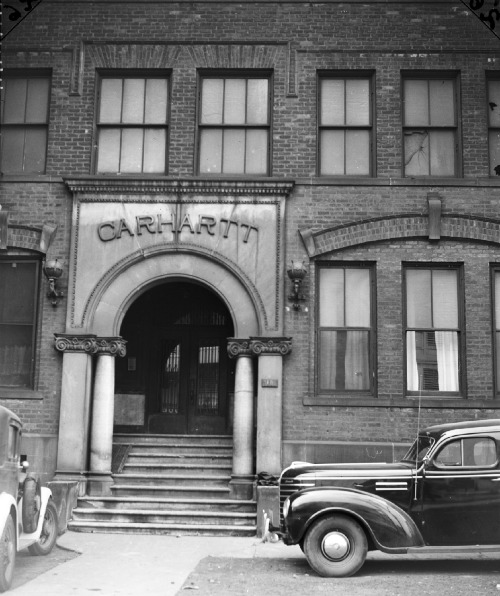
(Wayne State University)
Carhartt, of course, survived the Great Depression and once again has a worldwide presence. Today, the company's world headquarters is just beyond the city limits at 5750 Mercury Drive in Dearborn. You can still buy Carhartt clothing in Corktown at the National Dry Goods Co. at 1200 Trumbull Avenue, just half a mile from the spot where Carhartt overalls were made for forty years.
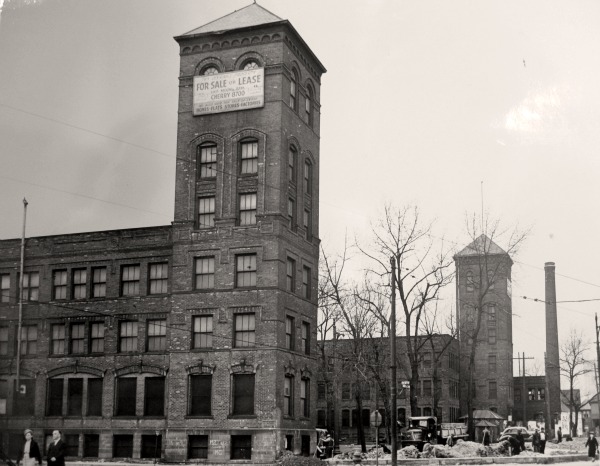
Courtesy of the Burton Historical Collection, Detroit Public Library
